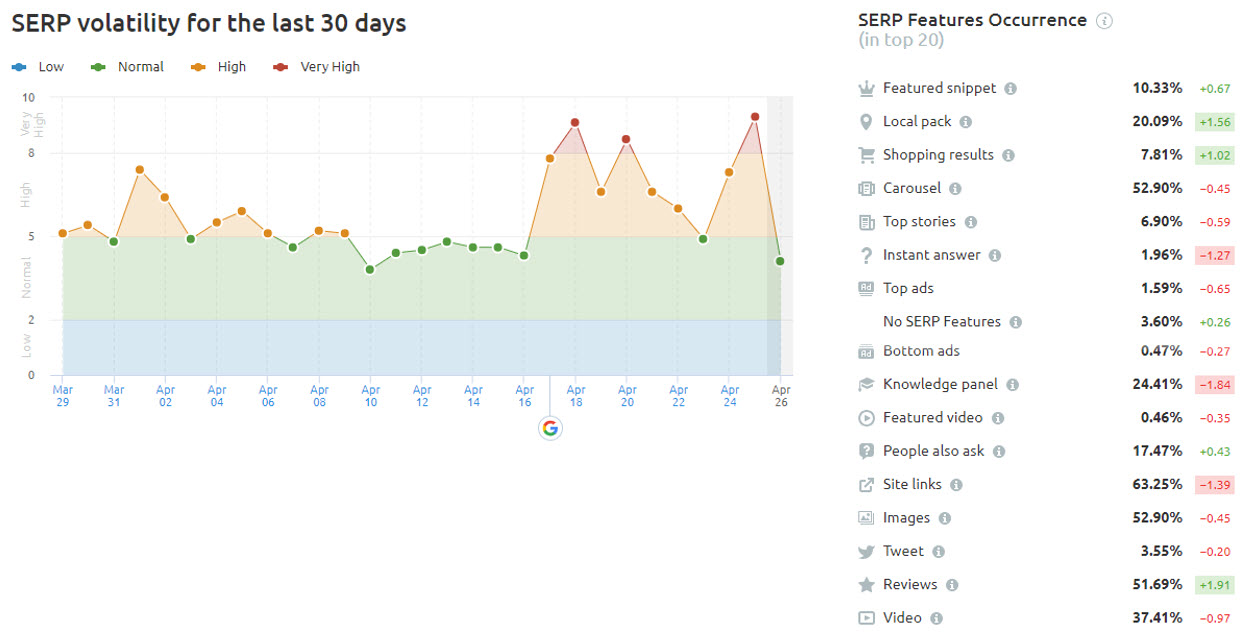Author: Jill Kocher Brown / Source: Practical Ecommerce
Google launched a broad core algorithm update last week that impacted web search appearance and rankings.
Algorithm changes typically center on rankings improvements tied to determining the quality of a site’s contextual relevance or authority within its topic or industry. A broad core change like this one indicates that Google has done more than its typical tinkering that results in one to two small algorithm updates a day on average. They’ve changed something larger in the core of the algorithm that impacts a wider array of rankings.
The impact of those changes can be viewed in the tools such as SEMrush’s Sensor, which tracks aggregate rankings across thousands of keyword phrases to measure Google and Bing’s daily fluctuations.

Affected Sites
The algorithm update, according to the brief announcement on Twitter by Google SearchLiaison, focuses on rewarding previously under-ranking sites. Naturally, the announcement explains, this means that sites that had previously been ranking well may be pushed a little lower on the search results page. This is based not on punishing those who rank poorer now, but on rewarding those who deserve it more, in Google’s estimation.
That’s cold comfort for those who find themselves ranking further down on page one of Google’s search results or pushed to page two, however.
Once upon a time, Google would disclose the nature of its algorithm updates. Those days are over. In fact, Google rarely even acknowledges that an update has happened anymore. The acknowledgment, in this case, is a nod to the scope of the change.
In some instances, such as during the damage control several years around the wide-ranging impact of the Panda and Penguin updates, Google has also indicated the percent of search results that were impacted. Unfortunately, Google has also stopped giving that information.
What we can tell is that the algorithm…
Audience Team
The digital audience insights you need to build, manage and market to your digital audiences.

